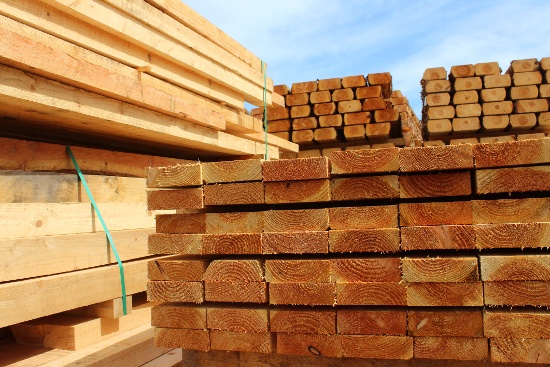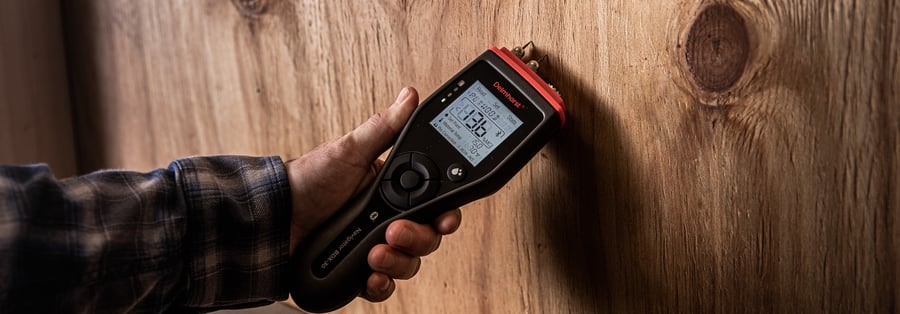Moisture Meter
moisture meters
pinless moisture meters
water damage restoration
detecting water damage
pin-type moisture meter
How to Get the Most Out of Your Moisture Meter: A Guide for Water Damage Restoration Professionals
.jpg)
Welcome to the third installment in our exclusive series on the benefits of using reliable moisture meters in the water damage restoration industry. Water damage is a major contributor to home insurance claims in America, with online experts iPropertyManagement reporting that the average claim for water damage is over $11,000. Therefore, restoration professionals must have the right equipment for detecting water damage to aid in the drying of materials and other factors such as mold remediation.
Buying any high-quality tool for your profession is an investment, so how do you make the most of your moisture meter and get the best value and product life for your money? Delmhorst Instrument Co. has put together this guide to using your moisture meter so you can get the best out of it, time after time.
The Right Moisture Meter for the Job
In our last article, we took an in-depth look at choosing the right moisture meter for water damage restoration work. The choice is between a pinless or a pin-type meter. Pinless meters use a flat scanning surface and RF signals, ideal for detecting water damage in large, smooth areas. They allow for rapid investigation and mapping out the extent of the moisture damage throughout a space.
Pin-type meters include two pins that are inserted into the potentially water-damaged material. An electric current passes between the pins, and the resistance indicates the moisture content reading (%MC). This allows you to pinpoint %MC for a wide range of materials, surfaces, and even tight spaces.
The Delmhorst Navigator™ family of moisture meters is popular with restoration professionals for accuracy, ergonomic design, and a range of practical features. These include a backlit screen, ideal for dark and cramped spaces; geotagging and timestamping for accurate reporting; a variety of material and wood species adjustments; and built-in device calibration check. The BDX-30 even offers a Bluetooth connection to the EDGE™ app for additional features and benefits.
Once you've invested in a high-quality moisture meter, you want to know that it will last you for many years and across a spectrum of projects. Here are a few ways to get the most out of your device and extend its life as long as possible.
Check Your Meter is in Calibration
Moisture meters need to be checked from time to time to ensure they are giving accurate readings. Even a small difference between the reading your meter provides and the actual moisture content of the damaged materials could make a notable difference in the quality of your work.
Owners of pin meters can use a manufacturer supplied moisture content standard tool (MCS) to check calibration of their device. Pinless meters need a sensor block for this purpose instead. In either case, if the values don't match after following the instructions for either calibration tool, the manufacturer may need to repair and/or calibrate the meter before it regains its accuracy.
One last check before you go out on site — check your battery life! You don't want to be caught unaware with a dying battery on a job that will take many hours. For peace of mind, the BDX moisture meters have internal calibration and low battery alerts to help maximize your efficiency while working.
Check Your Settings
Using your instrument to measure the moisture content of flood-damaged drywall while the device is still adjusted for oak will give inaccurate readings that cause preventable delays to your project. Check that your moisture meter is set for the right wood species or other material and ensure your meter's other settings like temperature and electrode are correct as required.
These also could include ensuring your Bluetooth is switched on if you plan to use the EDGE™ app or other connective functionality. It's also a good practice to periodically check features like your brightness and contrast settings to ensure you can continue to use your meter effectively in dark or cramped spaces.
Look After the Physical Condition of Your Moisture Meter
Even normal on the job handling can eventually cause damage no matter how sturdy or robust your device is. Delmhorst meters always include a carrying case and it’s a good idea to use it for protection. Look for devices that feel solid and are built to withstand any professional instrument's day-to-day wear and tear.
Always use the correct batteries as specified by the manufacturer and try not to expose your moisture meter to extreme heat, cold or humid conditions. Over time such exposure will damage the internal components.
Most importantly, make sure you choose the right device from the outset so you can use the appropriate meter for every job. Take the time to get to know the settings and menus, and look after your moisture meter to give it the longest life possible.
Talk to Delmhorst about the warranty we offer on moisture meters and the resources we have at your disposal to make using our meters even more intuitive, transforming them into invaluable tools for your industry. In our next article, we'll look at a real-life case study highlighting how Delmhorst moisture meters have aided professionals in the water damage restoration industry. In the meantime, if you have any questions about choosing the right moisture meter for your project, contact a member of our team today.
To watch more videos
Subscribe to Our Blog
Post Related

moisture meters
lumber industry
Moisture content in lumber
woodworking
moisture content in wood
moisture levels in lumber
moisture levels in wood
pin-type meters
pinless meters
health and safety
Moisture Meters: An Essential Tool in the Lumber Industry

